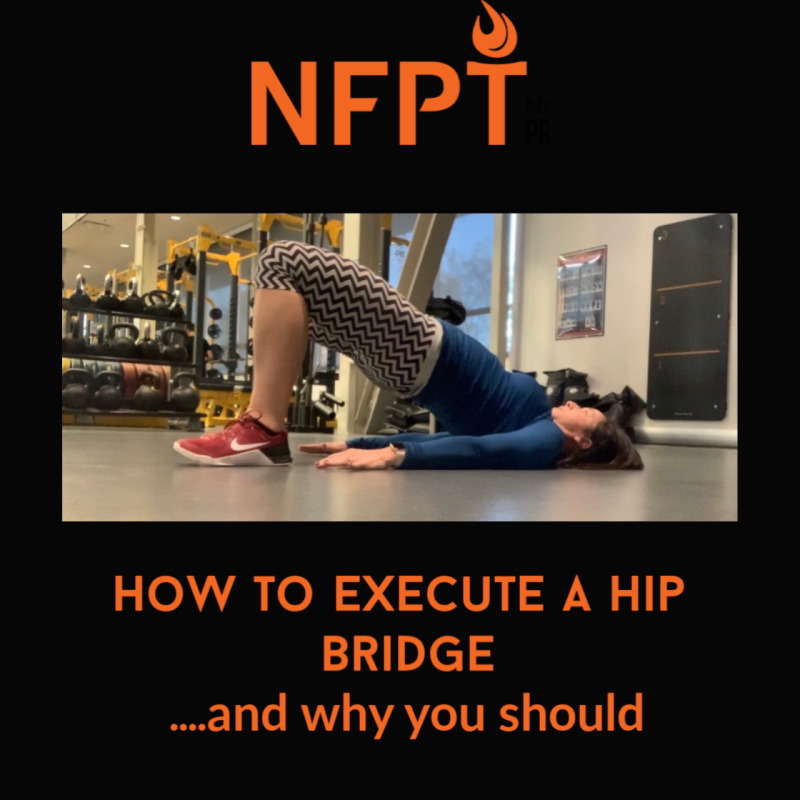
When you walk into the gym, there is no shortage of glute exercises being done in every corner of the facility with every piece of equipment you never even imagined using for one main purpose: a nice rear! But are we neglecting a movement that might make all the difference in the world for our clients’ posterior….and posterior chain? Enter the hip bridge! Here are some good reasons you should incorporate this movement and how to execute it properly.
I Like Big Glutes and I Don’t Know Why
It is safe to say that the coveted bootylicious look has made its way from fad to trend in recent years. And people are incredibly creative in their approaches to being on-trend.
Common “go-to” moves on glute day tend to include: squats, lunges, or deadlifts, but there are plenty of reasons to try something different. For starters, those exercises may not be suitable for some clients’ glute-growing goals.
For example, clients with hip, knee, and/or ankle mobility limitations may not be the best candidates for back or front squats, lunges, or even deadlifts. Moreover, clients with lumbo-pelvic hip dysfunction, specifically an anterior pelvic tilt, would be best served by first correcting that muscle imbalance and strengthening the glutes while stretching the quads and hip flexors.
Sure there are some options to work on squat mobility and lunge regressions, but I propose trying glute bridges that may better target the glute muscles. A recent meta-analysis of electromyographic studies reveal that a basic bridge will activate around 23% of the glute’s maximal voluntary isometric contraction (MVIC), where a bodyweight squat only activates around 8-14%!
Single leg movements, like single-leg squats, lunges, and single-leg deadlifts fare much better, ranging from 20-36% of MVIC. However, when one progresses appropriately to a single leg bridge, the glute will be recruited up to 50% of its maximal potential. The only thing that beats it is prone hip extension movements in various positions, however, this movement is difficult to load with heavy weights, if any at all.
Simply put, not all glute exercises are created equally. In fact, some exercisers may reap glute benefits of some more basic exercises rather than trying to get fancy and copy some IG influencer’s leg routine.
Another compelling reason to mix up the glute game is to challenge and target the muscles in unique ways. If someone does not present with any obvious postural dysfunction or limited mobility, she may just desire a different aesthetic in her physique; if what she’s been doing hasn’t been getting her there, then it’s time to introduce a new element.
Learning From Injury
And sometimes, we’re literally forced into a new routine. Last year I had developed a pinched nerve in my back, which really threw a wrench in my power-lifting season. In particular, I was sidelined from doing back squats and deadlifts. As an alternative to turn my nagging mind off, my coach had me start doing hip bridges (also referred to as glute bridges).
The glute bridge and its progressions might just be the right combination of glute mixing we’re looking for.
Lower. Lift. Repeat.
At first I was just going through the motions. Begrudgingly. I’d ignorantly assumed a hip bridge was no substitution for the squats and deadlifts I was unable to do. But after doing some research, I discovered two important points that have made this maneuver a mainstay in my repertoire:
- The posterior chain from the back, hips, and legs, are all strengthened when executing this movement properly.
- A hip bridge can be made more challenging (progressed) and thus a different muscle fiber can be developed (more on this next month).
While it may be a well-known fact that hip bridges are an excellent core strengthening exercise, a lesser-known fact, although growing in popularity, is that so much more than the core is being innervated in this exercise. This exercise has seen a variety of complex modifications including the now very popularized hip thrust, which I will discuss in the months to come. It is important to start clients off with the proper foundation of the glute bridge before progressions are introduced.
Hip Bridge Execution
- Start client lying supine (on their back) with the knees bent
- Heels should line up under the knees and be placed hip-width distance
- Arms are placed without bearing weight alongside the body
- Brace the abdominals and engage the glute muscles
- Drive through the heels to raise the lower back off the floor while exhaling; coming up to the shoulders without crunching into the cervical spine or overextending the lumbar spine (as is often seen in a yoga bridge)
- Pause at the top
- Lower the hips back toward the floor on the inhale
The same study cited above indicated that verbal and tactile cues improved gluteal muscle recruitment, so make sure you are coaching your client through the movement!
What are some ways you have incorporated a hip bridge? Consider using it as a warm-up and hip opener before every lower body workout if not a working set.
References
https://www.ncbi.nlm.nih.gov/pmc/articles/PMC5534144/






